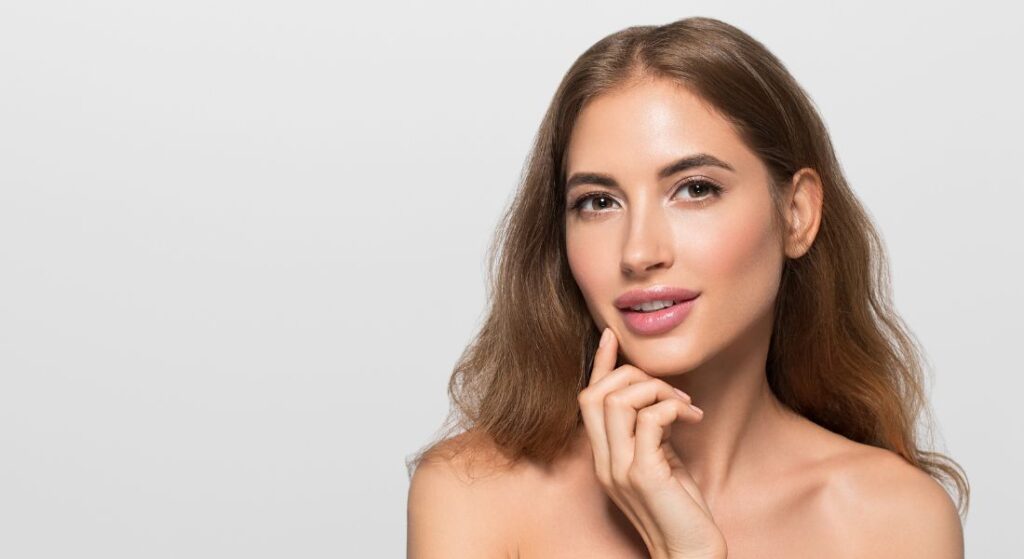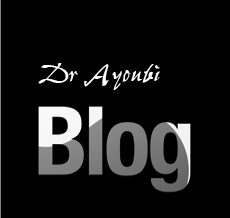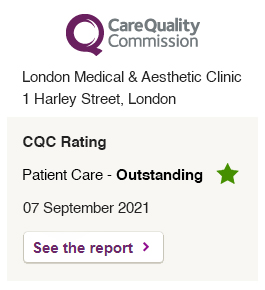
Facial rejuvenation isn’t a one-size-fits-all journey. For many people, the best results come from combining treatments that work in harmony targeting different layers of the skin and ageing process.
Among today’s most innovative injectables, Sculptra stands out for its ability to stimulate natural collagen production and deliver gradual, long-lasting volume restoration. But patients often ask a key question: can Sculptra be safely combined with other aesthetic treatments?
The answer is yes when done correctly and strategically. This article explains how Sculptra works, which combinations enhance its effects, what to avoid, and how expert planning leads to balanced, natural results.
What Is Sculptra and How Does It Work?
Sculptra is not a typical dermal filler. Unlike hyaluronic acid (HA) fillers that physically add volume beneath the skin, Sculptra works by stimulating your body’s own collagen production over time.
Its main ingredient, poly-L-lactic acid (PLLA), acts as a biostimulator. Once injected, it triggers a natural healing response prompting fibroblasts to build new collagen strands. This process gradually thickens and smooths the skin from within, restoring lost structure and elasticity.
Because collagen rebuilding takes time, Sculptra’s results appear subtly over several months and can last up to two years or more.
Why Combine Sculptra with Other Treatments?
Sculptra is exceptional for improving facial structure and long-term firmness, but it’s not designed to address every aesthetic concern.
By combining it with complementary treatments, you can:
– Enhance hydration and surface glow.
– Smooth fine lines and dynamic wrinkles.
– Improve skin tone, texture, and elasticity.
– Target volume loss, sagging, and dullness simultaneously.
– Achieve natural, 360° rejuvenation instead of focusing on one layer.
A combination approach ensures your face looks refreshed not “done.” Each treatment amplifies the others for a balanced, cohesive result.
The Art of Combination: Layered Rejuvenation

Think of your skin as having multiple levels each with its own needs.
1. Deep Structural Layer (Fat, Bone, Collagen):
Sculptra rebuilds collagen deep within the dermis, strengthening your facial foundation.
2. Mid-Layer (Volume and Contours):
Dermal fillers or fat grafting restore shape to cheeks, lips, and jawline.
3. Surface Layer (Texture, Tone, and Glow):
Treatments like Profhilo, microneedling, or laser resurfacing enhance hydration and smoothness.
When these layers are addressed together thoughtfully and safely the face looks rejuvenated from every angle.
Treatments That Work Well with Sculptra
Here’s a breakdown of the most effective and popular combinations:
1. Sculptra + Botox (or Other Anti-Wrinkle Injections)
How They Complement Each Other:
While Sculptra builds collagen and volume, Botox relaxes muscles that cause expression lines (like frown lines or crow’s feet).
Combining both gives you structural improvement and smoother skin. Sculptra lifts from within; Botox softens from the surface.
Best Sequence:
Botox can be done before or after Sculptra usually with a two-week gap to allow proper settling and muscle relaxation.
Result:
A refreshed, youthful look that appears natural rather than frozen.
2. Sculptra + Hyaluronic Acid Fillers (Juvederm, Restylane, Teosyal)
How They Complement Each Other:
HA fillers provide immediate volume and contouring, while Sculptra offers gradual, collagen-based improvement.
Combining them can target both short-term enhancement and long-term rejuvenation.
Example:
– Use Sculptra for temples, cheeks, and jawline (deep support).
– Add HA fillers for lips or under-eyes (delicate definition).
Best Sequence:
Sculptra should generally be performed first, as it stimulates collagen over time. HA fillers can follow after a few weeks to refine results.
Result:
A balanced, natural appearance never overfilled.
3. Sculptra + Profhilo or Skin Boosters
How They Complement Each Other:
While Sculptra works on structure and firmness, Profhilo and other skin boosters focus on hydration and elasticity.
Profhilo delivers high concentrations of pure hyaluronic acid that spread through the skin, improving its texture and glow.
Best Sequence:
Profhilo is typically added after Sculptra, once collagen stimulation has begun (about 4–6 weeks later).
Result:
Smoother, more radiant skin with deep collagen support underneath.
4. Sculptra + Microneedling or Radiofrequency (RF) Microneedling
How They Complement Each Other:
Both treatments encourage collagen production but through different mechanisms.
Microneedling creates controlled micro-injuries that prompt healing, while Sculptra provides the material and stimulus for deeper collagen growth.
Best Sequence:
– Wait 2–4 weeks after microneedling before Sculptra.
– Alternatively, Sculptra first, then RF microneedling after 6–8 weeks.
Caution:
Avoid performing both simultaneously to reduce the risk of irritation or inflammation.
Result:
Improved texture, firmness, and volume especially effective for acne scars or early laxity.
5. Sculptra + Laser Treatments (CO2, Fraxel, or IPL)
How They Complement Each Other:
Lasers resurface the skin, reducing pigmentation, fine lines, and uneven texture. Sculptra enhances underlying support for smoother healing and more youthful contours.
Best Sequence:
– Do laser after Sculptra (at least 4–6 weeks apart).
– For CO2 or ablative lasers, wait longer about 8–12 weeks to prevent over-stimulation or inflammation.
Result:
A brighter, tighter, and more even skin surface supported by renewed collagen underneath.
6. Sculptra + Chemical Peels
How They Complement Each Other:
Chemical peels exfoliate the top layer of skin, improving tone and clarity. When paired with Sculptra, the skin benefits from both renewed surface cells and deeper collagen growth.
Best Sequence:
Peels can be performed 2–3 weeks before or after Sculptra, depending on peel strength.
Result:
More radiant skin with improved firmness and elasticity.
7. Sculptra + Thread Lift (PDO or Silhouette Soft)
How They Complement Each Other:
Threads lift sagging skin mechanically, while Sculptra builds biological support over time.
This combination offers both immediate lift and long-term tightening.
Best Sequence:
Perform thread lift after completing your Sculptra series, or at least 6–8 weeks apart.
Result:
More defined facial contours with enhanced longevity of thread results.
8. Sculptra + PRP (Platelet-Rich Plasma)
How They Complement Each Other:
PRP (using your own plasma) promotes healing and collagen regeneration. Combined with Sculptra, it can boost the skin’s response and improve radiance.
Best Sequence:
Can be performed on the same day in different skin layers or spaced a few weeks apart.
Result:
Healthier, firmer, and glowing skin with natural tissue regeneration.
How to Safely Combine Treatments
Combining aesthetic procedures requires careful timing, sequencing, and understanding of how each product interacts with your skin.
Here are essential safety principles followed by medical professionals:
1. Never Mix in the Same Syringe or Session (Unless Approved):
Sculptra should not be injected alongside other products in the same area during one session to prevent reaction or uneven results.
2. Follow Proper Healing Intervals:
Allow time for your body to respond to each treatment before introducing another.
3. Avoid Overlapping Inflammatory Procedures:
Doing multiple collagen-stimulating treatments too close together (e.g., Sculptra + RF microneedling) can increase swelling or nodules.
4. Consult a Qualified Injector:
Only an experienced aesthetic practitioner should design your combination plan taking into account your skin condition, treatment history, and desired outcome.
5. Maintain Aftercare Discipline:
Gentle massage, hydration, and sun protection are key after Sculptra and all combination treatments.
When Not to Combine Sculptra

While most combinations are safe, there are times when waiting is better:
– Recent infection or active inflammation: Wait until fully healed.
– Strong resurfacing or chemical peels: Allow at least 3–4 weeks before Sculptra.
– Recent dermal filler injection in the same area: Avoid overlapping layers to prevent irregularities.
– Pregnancy or breastfeeding: Avoid all aesthetic injectables until cleared by your doctor.
Patience ensures better outcomes and reduces the risk of complications.
Typical Treatment Timeline for Combined Plans
Here’s an example of how a multi-treatment journey might look when combining injectables and skin treatments.
Your plan could begin with your first Sculptra session to stimulate collagen production. Around four weeks later, you might have Botox or a skin booster treatment to relax fine lines and deeply hydrate your skin.
By week eight, a second Sculptra session usually follows to continue building collagen and enhance skin structure. About two to three weeks after that, your practitioner may recommend a light peel or laser session to resurface and brighten your complexion.
Finally, at around six months, it’s common to schedule a review and top-up appointment to assess your progress and fine-tune results. After this point, many people return for maintenance treatments every 12 to 18 months.
Every plan is individual your treatment spacing will depend on your age, skin type, and personal goals.
Combining Sculptra for Different Treatment Areas
Sculptra can be used not only on the face but also for body rejuvenation, and combination plans differ accordingly:
– Face: Combine with fillers or Botox for lifting and smoothing.
– Neck & Décolletage: Pair with skin boosters or microneedling for tightening and texture.
– Buttocks (Liquid BBL): Combine with RF or collagen-boosting treatments for firming.
– Hands: Add Profhilo or laser for improved tone and hydration.
A holistic approach treats all areas cohesively, creating harmony between skin texture and volume.
The Role of Expertise in Combination Treatments
Sculptra requires advanced knowledge of anatomy and technique. Its results depend on precise placement and dilution ratios.
When combined with other procedures, expertise becomes even more critical.
An experienced practitioner will:
– Evaluate your collagen quality and facial structure.
– Sequence treatments strategically.
– Prevent product overlap or inflammatory reactions.
– Tailor your plan for gradual, natural enhancement rather than drastic change.
Choosing a medically led clinic ensures your results are both beautiful and safe.
Managing Expectations

Because Sculptra works gradually, it’s important to understand that immediate changes are subtle. You’ll start noticing improvement around 6–8 weeks, with full collagen remodelling at 3–6 months.
Combining it with other treatments doesn’t speed up the collagen process it enhances the overall aesthetic outcome.
A realistic, personalised timeline ensures satisfaction and natural-looking results.
Aftercare When Combining Treatments
Aftercare is crucial for maintaining your results and avoiding side effects:
– Massage: Follow the 5-5-5 rule five minutes, five times a day, for five days (unless advised otherwise).
– Avoid intense exercise, saunas, or alcohol for 24–48 hours after injections.
– Stay hydrated to support collagen production.
– Use SPF daily sun exposure slows healing and collagen growth.
– Follow individual instructions for each treatment (e.g., no rubbing after Botox).
Your practitioner will give a clear aftercare plan based on your specific combination.
Common Myths About Combining Sculptra
Myth 1: “Sculptra and fillers do the same thing.”
False. Fillers add instant volume; Sculptra builds natural collagen over time.
Myth 2: “You can’t do other treatments after Sculptra.”
False. You can as long as timing and technique are managed professionally.
Myth 3: “Combining treatments causes lumps or swelling.”
Only if improperly performed. With correct dilution, placement, and spacing, the risk is minimal.
Myth 4: “It’s too expensive to combine treatments.”
In fact, combination plans can extend results and reduce the need for frequent touch-ups making them cost-effective long term.
The Science Behind Safe Combination
Research supports combination therapy for synergistic anti-ageing effects.
Studies show that biostimulatory injectables like Sculptra increase collagen types I and III, improving skin density. When followed by HA fillers or laser resurfacing, the improved dermal matrix enhances both performance and longevity.
This layered approach mirrors how ageing occurs across multiple levels of the skin and addresses it comprehensively rather than in isolation.
Frequently Asked Questions About Combining Sculptra with Other Treatments:
1. Can I get Sculptra and Botox on the same day?
It’s generally best to separate Sculptra and Botox appointments by about two weeks. This allows each treatment to work optimally Sculptra stimulates collagen deep within your skin, while Botox relaxes facial muscles near the surface. Doing both in the same session could make it harder to judge how your muscles are responding, so your practitioner will likely plan them a few weeks apart for a more balanced result.
2. How soon after Sculptra can I have laser or chemical peels?
You should wait at least four to six weeks before having laser resurfacing or a light chemical peel. Your skin needs time to settle and begin its collagen-building process before introducing heat or exfoliation. If you’re planning a stronger CO₂ laser or deeper peel, your doctor might extend that gap to eight to twelve weeks to prevent overstimulation or irritation.
3. Can I combine Sculptra with hyaluronic acid fillers?
Yes, you can. Sculptra and hyaluronic acid fillers complement each other beautifully because they work in different ways. Sculptra gradually rebuilds collagen and restores structure, while fillers instantly enhance volume or definition. Most practitioners prefer starting with Sculptra, then adding fillers a few weeks later to refine the contours once the base support has started forming.
4. Is it safe to do microneedling or RF microneedling after Sculptra?
It’s safe when timed properly. You should allow at least six to eight weeks between Sculptra and RF microneedling to let collagen stimulation begin without unnecessary inflammation. If you’ve done microneedling first, waiting two to four weeks before Sculptra ensures your skin has healed enough. Doing them too close together can cause redness or small nodules, so spacing is key.
5. What should I avoid after combining Sculptra with other treatments?
For the first few days, avoid intense workouts, saunas, steam rooms, or alcohol, as these can increase swelling. Don’t massage treated areas unless your practitioner advises the 5-5-5 rule (five minutes, five times a day, for five days). It’s also wise to skip facials or exfoliation for at least a week. Most importantly, always use sunscreen daily, since UV exposure can slow down collagen formation.
6. Will combining treatments make results last longer?
Yes, when done strategically. Sculptra already has long-lasting effects often up to two years but pairing it with other treatments can enhance and extend the outcome. For example, Botox can prevent repeated facial movements that break down collagen, and skin boosters can maintain hydration so your new collagen stays healthy. A tailored plan keeps your skin looking firm and luminous for longer.
7. Are combination treatments painful or require downtime?
Discomfort is usually minimal, as most procedures involve fine needles or microcannulas and can be done under topical anaesthetic. You may experience mild swelling or bruising for a few days, especially if several treatments are performed within the same month. Most people return to normal activities right away. When treatments are spaced correctly, downtime stays manageable and recovery is smooth.
8. How do I know the right order for combining treatments?
Your practitioner will decide the sequence based on your skin’s needs. Generally, biostimulators like Sculptra come first to build structural support. Once collagen production has begun, treatments targeting texture, pigmentation, or hydration such as lasers or skin boosters follow later. Planning this order helps avoid interference and ensures each procedure complements the other instead of competing with it.
9. Can I see results faster if I combine Sculptra with other treatments?
While combination treatments can improve your overall appearance more completely, Sculptra’s collagen-stimulating effect still takes time. You’ll start to notice subtle fullness after about six to eight weeks, with continued improvement over several months. Other treatments, such as fillers or Botox, can give you quicker surface improvements, but Sculptra’s gradual process ensures your results look natural and last longer.
10. How do I choose the right clinic for combination treatment plans?
Look for a medically led clinic with experience in Sculptra and multi-modality facial rejuvenation. The injector should have a deep understanding of facial anatomy and how different treatments interact. During your consultation, they should assess your skin, explain timing clearly, and design a step-by-step plan rather than suggesting everything at once. Choosing an expert ensures that your results are safe, subtle, and completely tailored to you.
Final Thoughts: Designing the Perfect Combination for You
When it comes to combining Sculptra with other aesthetic treatments, there’s no one-size-fits-all approach. The key is understanding how each treatment complements the other building collagen with Sculptra, refining contours with fillers, relaxing lines with Botox, and enhancing skin quality with lasers or boosters. Together, they create results that look refreshed, natural, and beautifully balanced.
At the London Medical & Aesthetic Clinic, Dr Ayham Al-Ayoubi and his expert team specialise in bespoke treatment combinations that deliver both instant and long-term rejuvenation. Every plan is tailored to your skin type, age, and personal goals, ensuring your outcome looks subtle yet transformative.
If you’re considering Sculptra in London, you can contact us at London Medical & Aesthetic Clinic to discuss your treatment goals with Dr Ayham Al-Ayoubi. As one of the UK’s leading experts in non-surgical facial rejuvenation, Dr Al-Ayoubi combines advanced techniques and artistry to deliver natural, long-lasting results tailored specifically to you.
References:
1. Signori, R., de Paula Barbosa, A., Cezar-dos-Santos, F., Carbone, A.C., Ventura, S., Nobre, B.B. d S., Neves, M.L.B.B., Câmara-Souza, M.B., Poluha, R.L. & De la Torre Canales, G. (2024) ‘Efficacy and safety of Poly-l-Lactic Acid in facial aesthetics: a systematic review’, Polymers, 16(18), 2564. https://www.mdpi.com/2073-4360/16/18/2564
2. Ruiz-de-León, G., Cortés-Eslava, D., Hernández-Pacheco, E., Serrera-Figallo, M.Á., Torres-Lagares, D. & Baus-Domínguez, M. (2025) ‘Biopolymers in facial aesthetics: Gel-based applications, safety, effectiveness, and future prospects A systematic review of the literature’, Gels, 11(6), 455. https://www.mdpi.com/2310-2861/11/6/455
3. Sundaram, H., Liew, S., Signorini, M., Braz, A.V., Fagien, S., Swift, A., De Boulle, K.L. & the Global Aesthetics Consensus Group (2016) ‘Global Aesthetics Consensus: Hyaluronic Acid Fillers and Botulinum Toxin Type A Remarks for combined treatment and optimising outcomes in diverse patient populations’, Plastic and Reconstructive Surgery, 137(5), pp. 1410-1423. https://pmc.ncbi.nlm.nih.gov/articles/PMC5242215/
4. ‘A systematic review on the effectiveness and safety of combining biostimulators with botulinum toxin, dermal fillers, and energy-based devices’ (2025) Journal of Aesthetic Medicine, [online] https://pubmed.ncbi.nlm.nih.gov/39719485/
5. ‘Combination of intense pulsed light, Sculptra, and Ultherapy for treatment of the ageing face’ (2014) Dermatologic Therapy (Wiley), [online] https://pubmed.ncbi.nlm.nih.gov/24910274/





